Art World
What’s the Best Work of Art You Saw This Summer? 18 (More) Well-Traveled Experts Weigh In
In the final installment of our series, Shirin Neshat, Brett Gorvy, and others tell us about the most memorable works they saw this season.
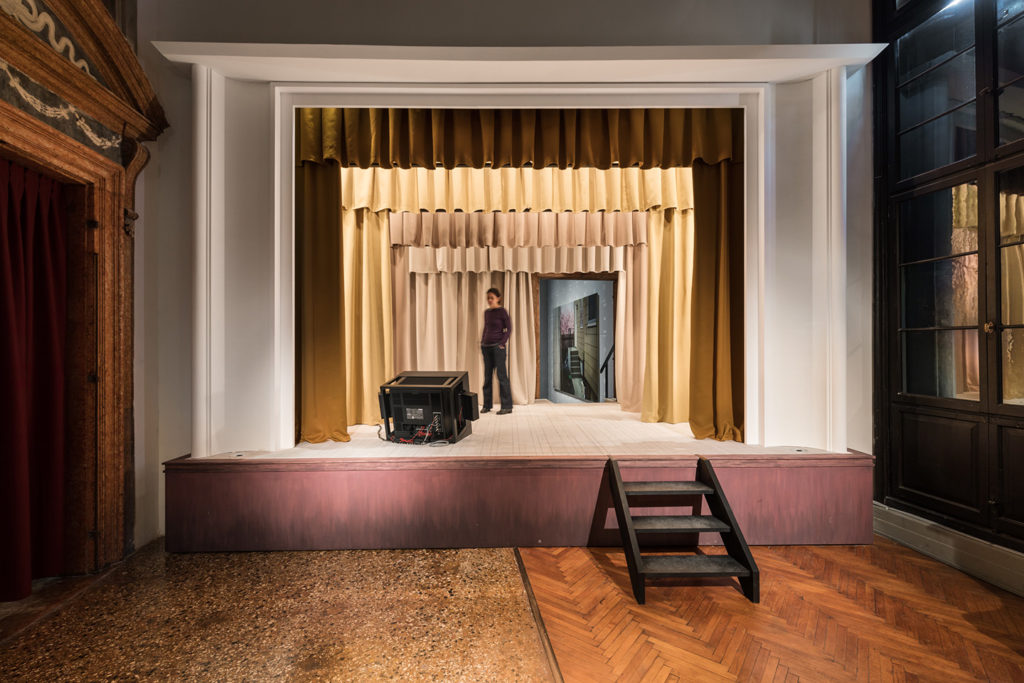
In the final installment of our series, Shirin Neshat, Brett Gorvy, and others tell us about the most memorable works they saw this season.

Artnet News

Some people spend the summer swimming at the beach or reading at a lakeside cabin. Workaholic members of the art world, however, seem to spend their summers doing what they always do: looking at art. This year’s calendar was particularly jam-packed, with documenta 14, the Venice Biennale, and the Skulptur Projekte Münster coinciding for the first time in a decade.
We asked curators, museum directors, auction house executives, artists, and others to pick the best work of art they saw this summer—and tell us why they can’t get it out of their heads. The answers will take you from a picturesque harbor in Le Havre to a remote island in Japan.
This is the second in a two-part series. See the first round of responses here.
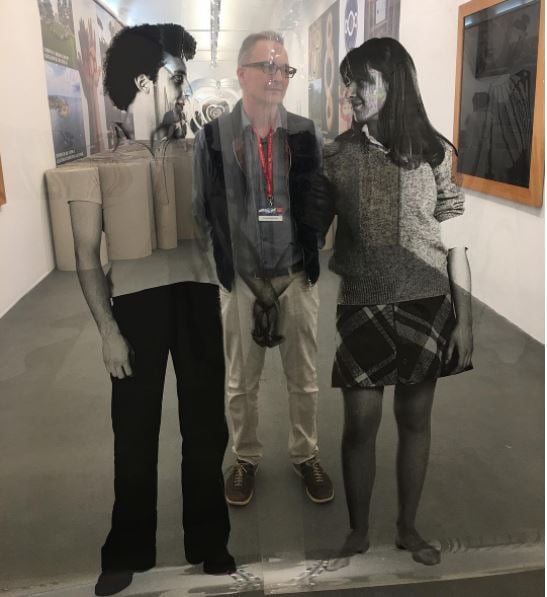
Brett Gorvy with Michelangelo’s One and One Makes Three, with Silver Portrait in the background at “Michelangelo Pistoletto: One and One Makes Three” in Venice. Image courtesy Brett Gorvy.
Michelangelo Pistoletto’s Uomo Grigio allo Specchio, and, in the background, Silver Portrait (1960), from the show “Michelangelo Pistoletto: One and One Makes Three” at the Basilica di San Giorgio during the Venice Biennale. Here is a photo I took at the Pistoletto show in Venice. While I thought I knew his work, this was a wonderful journey into the deeper consciousness of one of the great Arte Povera artists. We think of his mirrors as his signature, but this is because he aspires to an engagement with the viewer, who is a willing and inadvertent participant. The work felt fresh and contemporary, of its time and beyond.

Installation shot of Joan Jonas’s “what is found in the windowless house is true” (2017). Photo: ©the artist, courtesy Gavin Brown’s enterprise, New York.
Joan Jonas had the most powerful exhibition, “what is found in the windowless house is true” at Gavin Brown’s enterprise in Harlem. I have known Joan for a long time, and I was really dumbfounded by how, the older she gets, the more fresh, the more profound her work becomes. She reminded me of Louise Bourgeois. I was really blown away by her videos in this exhibition—it was a very profound experience. She’s such an inspiration.
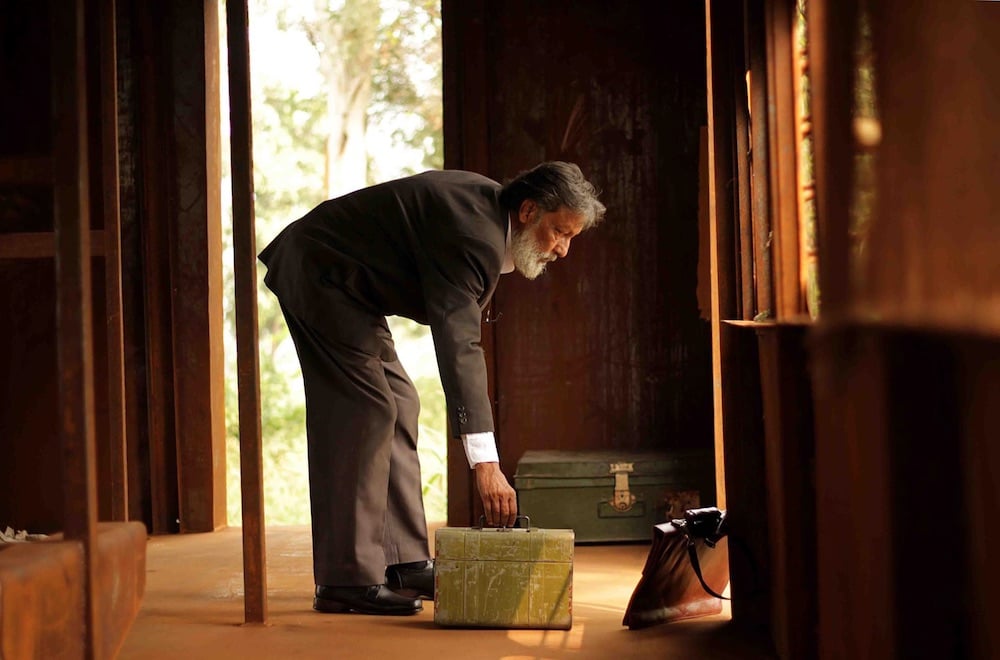
Still from Amar Kanwar’s Such a Morning (2017) on view at documenta 14. ©The artist, courtesy the artist and Marian Goodman Gallery, New York, Paris, and London.
Included in every documenta since 2002, Amar Kanwar’s works seek witness of complex issues through poetry. In the midst of the documenta 14 preview, Amar Kanwar’s Such a Morning (2017), an 85-minute film, stopped me in my tracks; it is richly dark, punctuated by pools of deep pigment and rippling light. Ostensibly tracing the late life of a self-exiled academic as he occupies an abandoned train carriage in a forest and as he loses his sight, it is a compelling and tender portrait, speaking of hope, truth, and transcendence.

Video still from Arthur Jafa’s APEX (2013). Courtesy Gavin Brown’s enterprise, Art Basel 2017
Arthur Jafa’s APEX at Art Basel Unlimited. I watched it five times, and it brought tears to my eyes. Jafa is a cinematographer from Los Angeles, and this was my first encounter with his work, which is very much about the notion of black bodies. The film is a loop of found images and they portray, in a sequence of associations, the perception of the black body, the violence around it. It’s fired at you as a fast-moving slide show, with a very monotonous techno soundtrack. The beat dictates the slides’ rhythm, but there’s an overtone that switches up, and the moment you think it’s peaked, there’s a break, and it starts all over again. I’m aware that all the ingredients are perfectly designed to blow you away: the right soundtrack, the right sequence of images… but when it’s done, well, wow! Watch out for it at an institution near you soon.
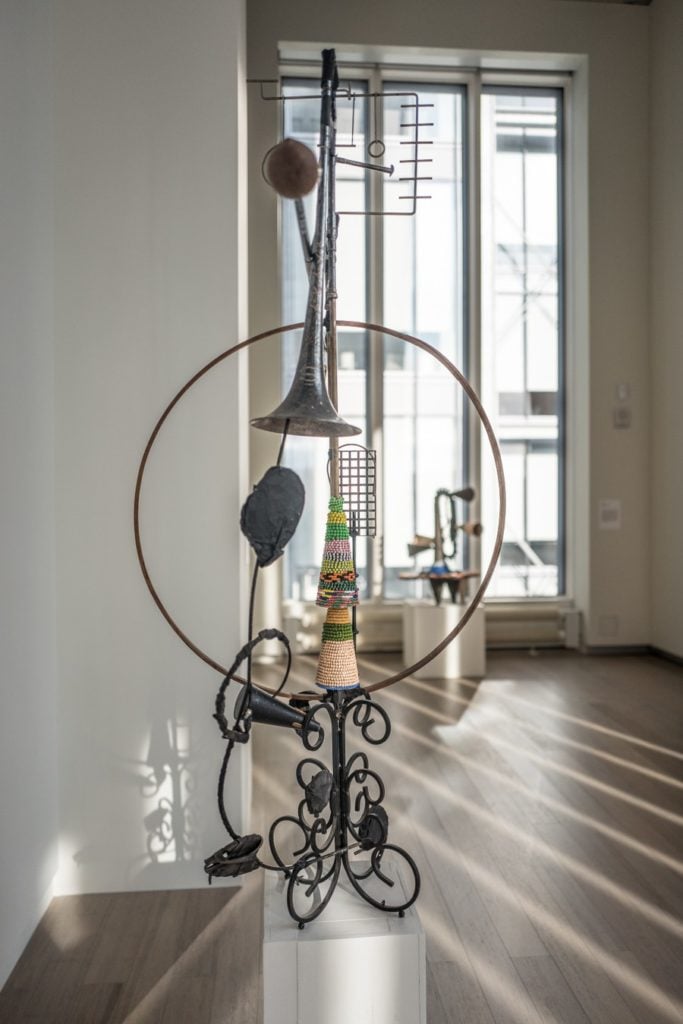
Michael Kelly Williams’s Revelation and Improvisation (2016) in “Uptown” at the Wallach Art Gallery at the Lenfest Center for the Arts. Photo: Anders Jones.
Almost under the radar, the city of Le Havre is celebrating its 500-year anniversary with many public art works and special commissions. While smaller than events like documenta 14 and the Venice Biennale, it focuses on a generation of French artists who are characterized by a whimsical post-Duchampian spirit. Stéphane Thidet’s permanent installation Impact deserves its name: Two powerful jets of water collide, creating an evanescent screen that changes constantly and then disappears as the six-minute loop ends. The installation frames the city against the back drop of the Bassin du Commerce, where Monet painted Impression, Soleil Levant.
Upon returning back to Kansas City, a quick stop in New York allowed me to visit the recently inaugurated Wallach Art Gallery at Columbia University, where the exhibition “Uptown” holds its own against the summer’s many multinational art events.
Elegant and understated, one piece still on my mind is by an artist that I hope to get to know better: Michael Kelly Williams. His piece Revelation and Improvisation brought into focus the pleasure of whimsical assemblage (one that grew deeper as I understood that the work was the result of his residency at the New York nonprofit Materials for the Arts recycling and reuse center), combining folk, African and musical instruments to celebrate his roots and passion for jazz.
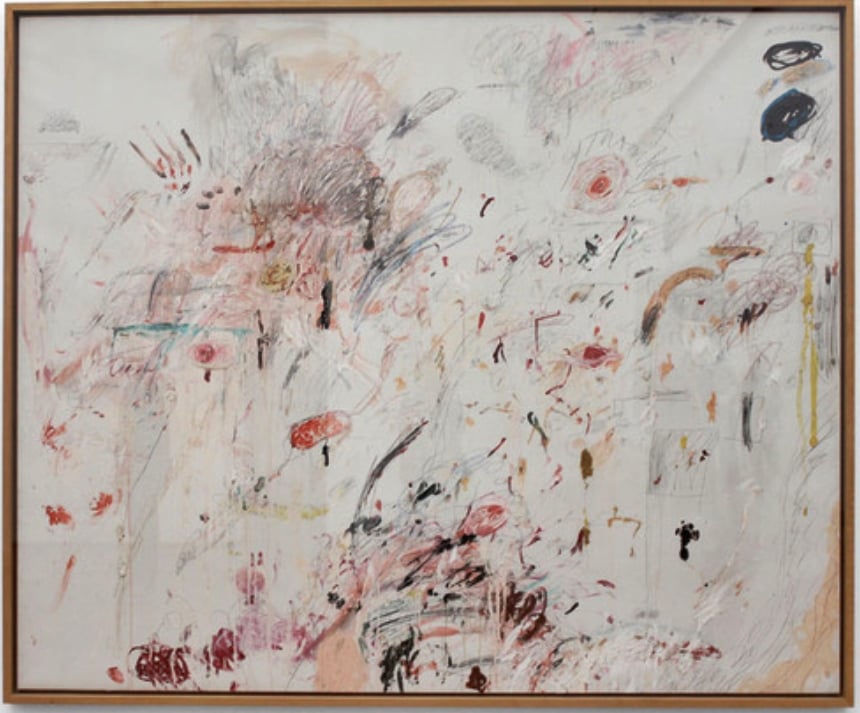
Cy Twombly’s Empire of Flora (1961) at the Hamburger Banhof in Berlin. Source: Cy Twombly Catalogue Raisonné.
CyTwombly’s Empire of Flora literally took my breath away when I rounded the corner and encountered it at the Hamburger Bahnhof in Berlin. To be totally accurate, I called my husband over to see this painting, because this was a canvas that contained all the joy, rage, decadence, and heroics of the greatest history paintings. Twombly uses rose, vermilion, peach, mahogany, and steel strokes and scrawls to evoke Poussin’s eponymous painting from 1631. Somehow, Twombly’s pure and bare mark-making stands up to the grandiose image created centuries ago by the Baroque master.
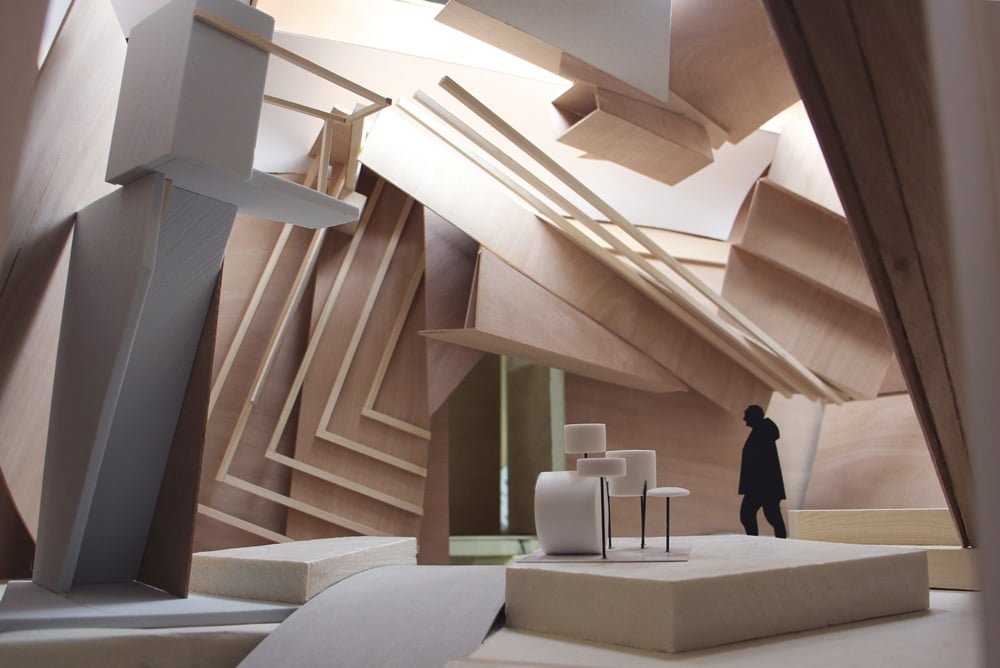
Xavier Veilhan’s Studio Venezia, model detail. ©Veilhan / ADAGP Paris 2017.
My selection is the French pavilion for the Venice Biennale, Studio Venezia, by artist Xavier Veilhan and curators Christian Marclay and Lionel Bovier. Titled “Studio,” as in production space, referring to both artists and musicians, Veilhan produced a Schwitters-like performance platform that allowed for performances throughout the duration of the Biennale. Collaborative, interactive, and bold, this work was my favorite this year.
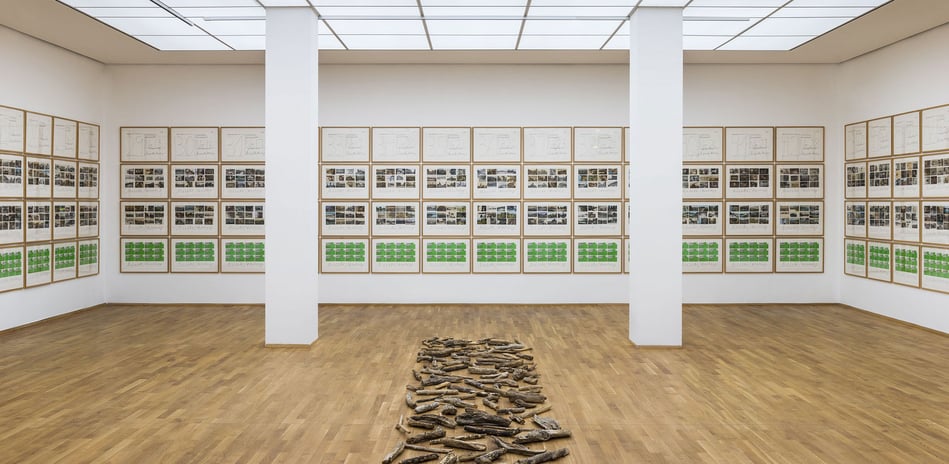
Installation view of Hanne Darboven’s Menschen und Landschaften (1985) in “Hanne Darboven: Correspondences” at the Hamburger Bahnhof – Museum für Gegenwart in Berlin. ©Hanne Darboven Stiftung, Hamburg / VG Bild-Kunst, Bonn 2017 / photo: Jan Windszus.
“Hanne Darboven: Correspondences” at the Hamburger Bahnhof – Museum für Gegenwart in Berlin. I have long admired the work of Darboven, and after seeing an exhibition of her work at Dia:Chelsea, I was pleased to see this recent acquisition by the museum. It encompasses drawings and letters from her peers over the years, which functions as a real history of conceptual art.
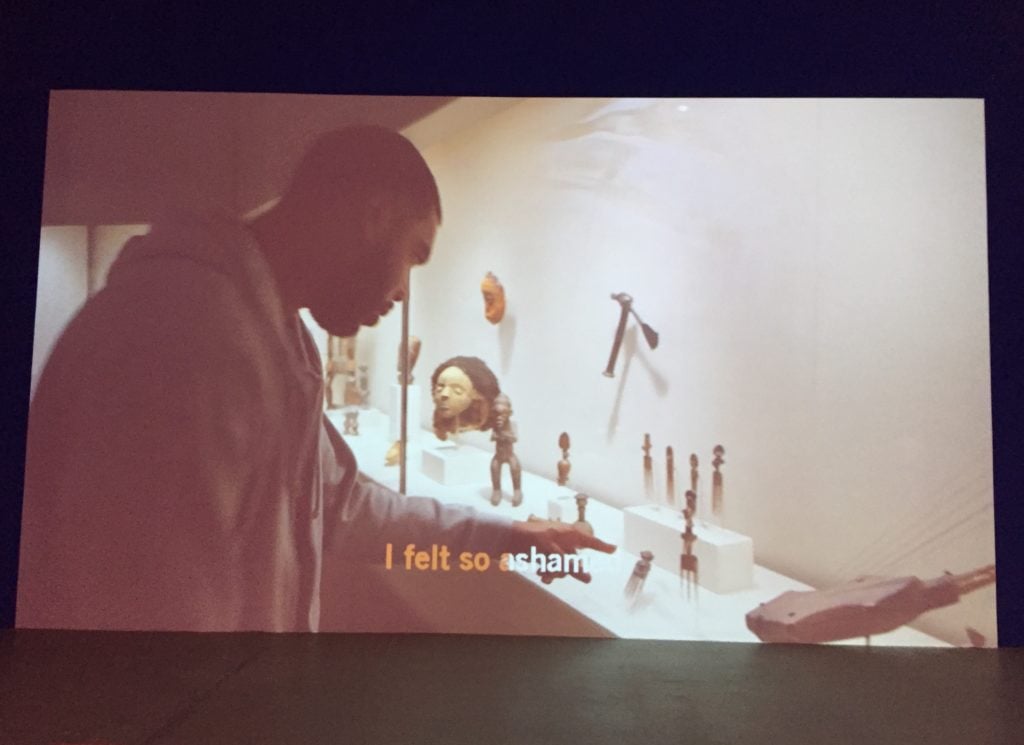
Sondra Perry’s IT’S IN THE GAME ’17 or Mirror Gag for Vitrine and Projection (2017). Two-channel video installation at the Institute of Contemporary Art at the University of Pennsylvania.
One of my favorite works this summer is Sondra Perry’s IT’S IN THE GAME ’17 or Mirror Gag for Vitrine and Projection in the show “Myths of the Marble” at the Institute of Contemporary Art, Philadelphia, at the University of Pennsylvania.
The installation, with its video centerpiece, addresses a common practice of video game makers: The creation of 3-D avatars of (mostly minority) NCAA basketball players, replicating their facial likenesses, physical attributes, movements, and even names, with neither permission from nor remuneration for the actual players.
Sondra Perry’s twin brother Sandy is the basketball player in question and the video toggles deftly between the reality of the close and playful relationship shared by the siblings (as in footage of the two flitting through the British Museum and through the Met’s collection of African art) and then the uncanny virtual reality of the digital object within the gaming interface that has become a remote control armature for the stolen identity of the artist’s brother.
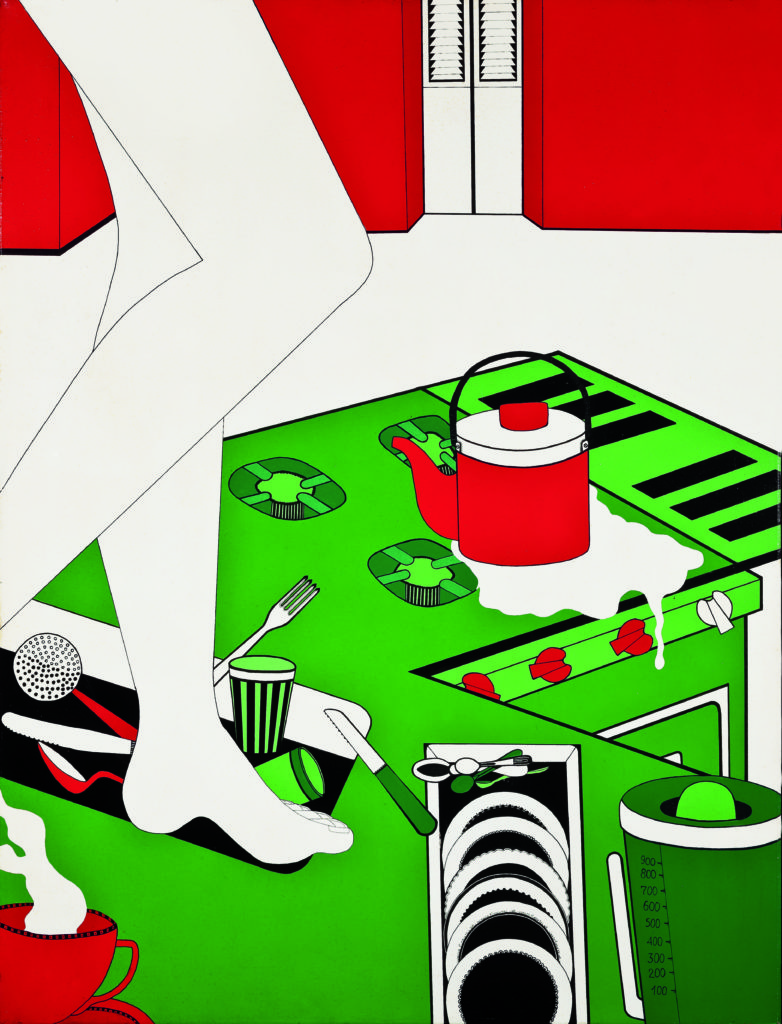
Wanda Pimentel’s Série Envolvimento (1968). Photo: courtesy of Fernanda Feitosa.
My choice for the best work I’ve seen this summer is by Wanda Pimentel, on view at the Museo de Arte de São Paulo. Born in Rio de Janeiro in 1943, she is a representative of our pop art movement. The series shows domestic objects and parts of female bodies within purely domestic settings. The composition and relationship of the objects is critical of the consumerism of the time and the sexual repression and position of women in society. Of course, the paintings were also critical of the political repression at the time, when Brazil was governed by the military.

Niels Ackermann and Sébastien Gobert’s Shabo, November 2015 from “Looking for Lenin” at the Recontres d’Arles, 2017.
At Les Rencontres d’Arles, photographer Niels Ackermann’s “Looking for Lenin,” a collaboration between Ackermann and journalist Sébastien Gobert. The series explores the intricate history of Soviet dominance in the Ukraine. It is a captivating project that investigates the complexities of a nation’s struggle with its past.
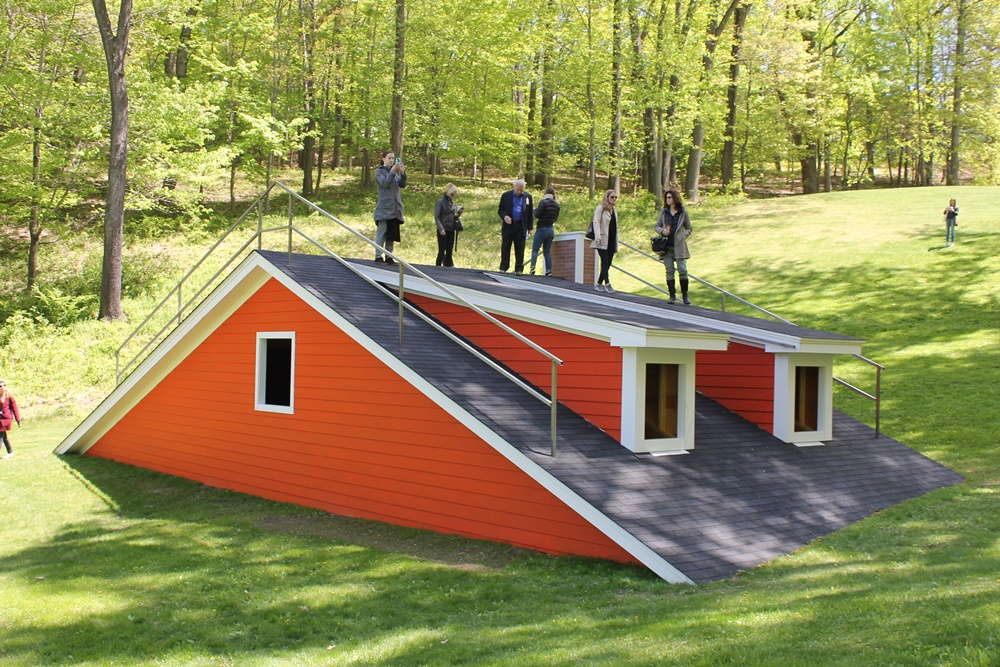
Heather Hart’s The Oracle at Lacuna (2017) at Storm King Art Center. Courtesy of the artist ©Heather Hart, photo by Jerry L. Thompson.
The best thing I saw this summer was Heather Hart’s The Oracle of Lacuna at Storm King Art Center, with a performance by electronic string duo Chargaux to celebrate the opening. It’s an ambitious project connecting site, history, and community—all wrapped up into the familiar visual and actual physical structure of a roof.
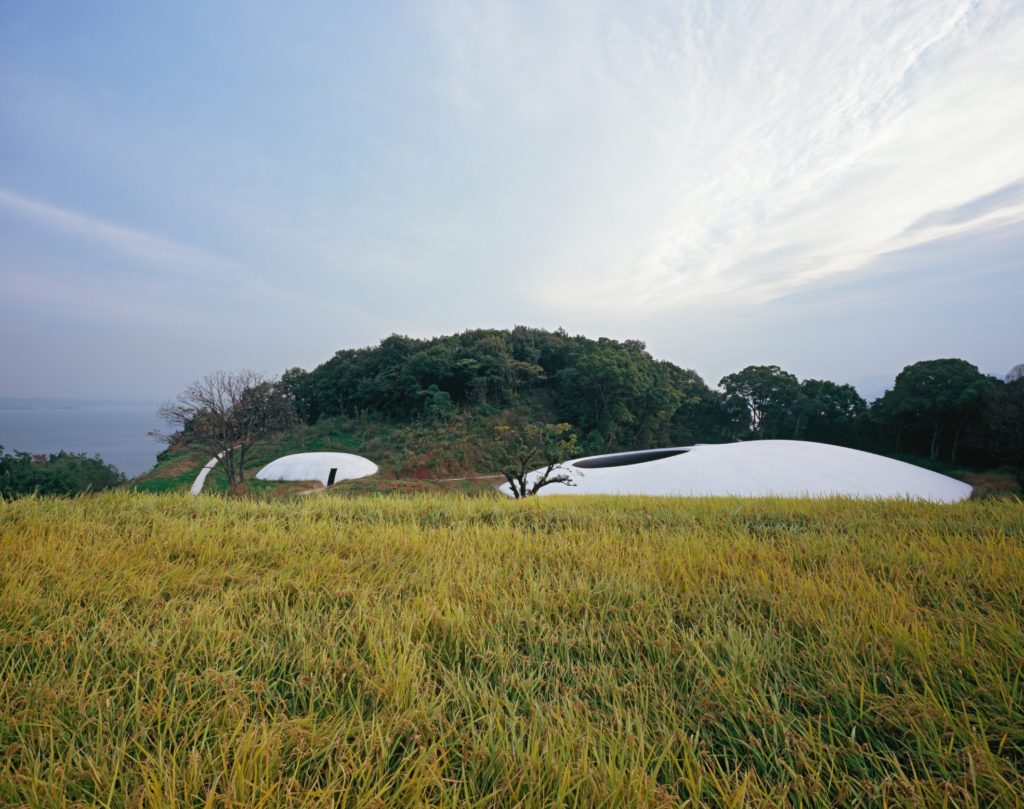
Teshima Art Museum, Photo: Ken’ichi Suzuki
The Teshima Art Museum designed by Ryue Nishizawa is the site of a single work of art by Rei Naito called Matrix. Earlier this summer, a friend and I traveled to this remote island in Japan where we were lucky enough to be the very first, and only, people inside the museum for 10 whole minutes. Tiny little water droplets greeted us, then danced across the concrete floor. I took off my shoes and took in the sun. It was sublime.
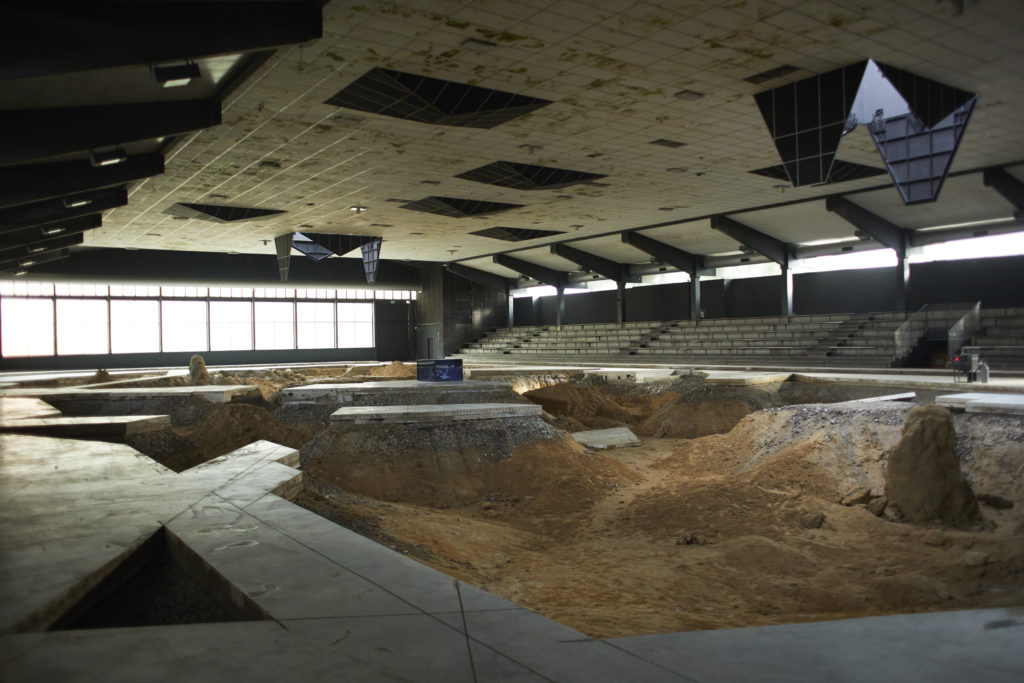
Pierre Huyghe’s After ALife Ahead (2017) at Skulptur Projekte Münster. Photo: Ola Rindal.
My favorite artwork I saw this summer was Pierre Huyghe’s After ALife Ahead at Skulptur Projekte Münster. Located off the beaten path in the city, next to a Burger King where unassuming residents munched on whoppers, you enter a strange world of decay and life in a former skating rink. Bees and flies swarm around you as you explore the large installation (specimens brought in by Huyghe), and transformer-like trap doors in the moldy ceiling open and close to a score based on a snail’s shell. Originally, Huyghe had brought in peacocks to reside in his installation, but by the time I saw the piece in July, the peacocks had been removed—an attendant told us that the environment proved to be distressing to the creatures. The experience was both creepy and exhilarating.
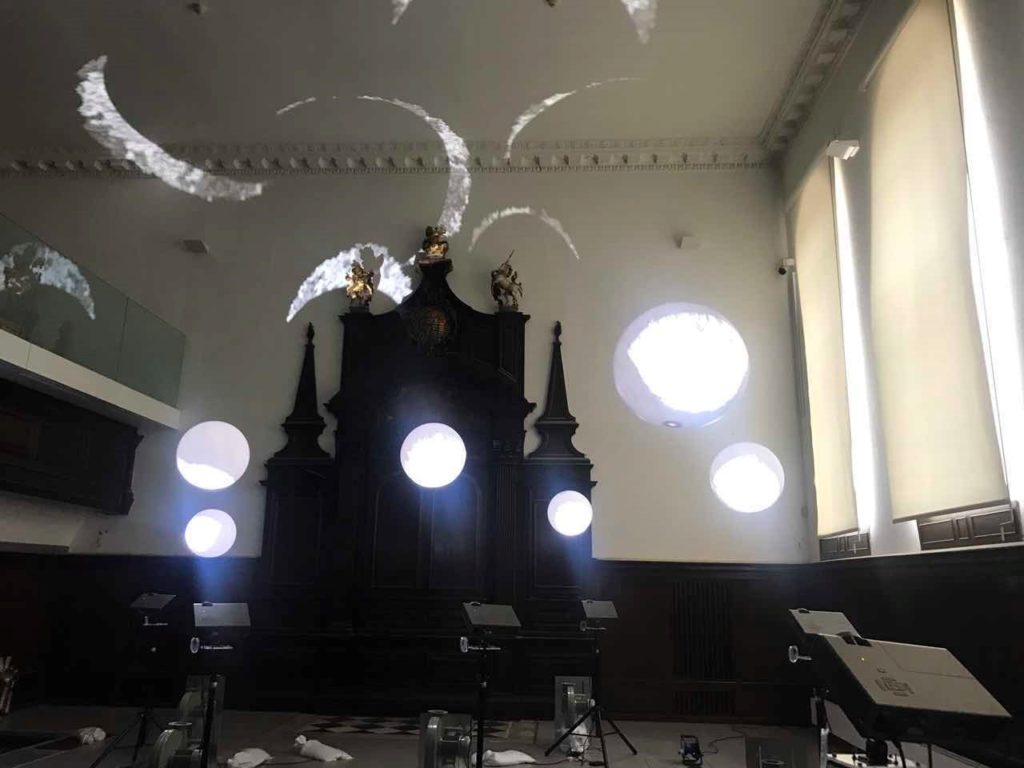
Installation of Nadim Abbas’s Human Rhinovirus 14 (2016) at Duddell’s London. Courtesy Kelly Ying.
Hong Kong artist Nadim Abbas‘s installation Human Rhinovirus 14 (2016) is on view at Duddell’s London, a Cantonese restaurant (in which, full disclosure, I’m an investor) that will open this November in St. Thomas Church, close to London Bridge. While the piece’s floating globes (actually beach balls) look like moons, they together mimic the form of the eponymous virus, also known as the common cold, and thus seem to romanticize the virus. Though the experience of catching a cold is familiar to everyone, the abstract imagery in Abbas’s piece makes it seem stranger than ever.
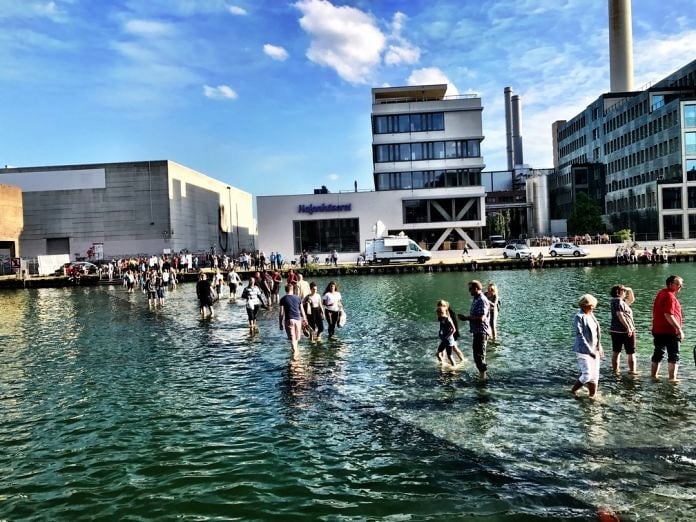
Ayşe Erkmen’s On Water project at Skulptur Projekte Münster 2017. Image courtesy ©SAHA projects.
Ayşe Erkmen’s On Water for Skulptur Projekte Münster. It did everything that a great artwork should do: formally beautiful and inventive; sensually engaging, demanding, and rewarding; intellectually stimulating; emotionally disturbing.

Thomas Demand, Alexander Kluge, and Anna Viebrock’s “The Boat is Leaking. The Captain Lied.” (2017) Exhibition view at the Fondazione Prada. Photo: Delfino Sisto Legnani and Marco Cappelletti. Courtesy Fondazione Prada.
Amar Kanwar’s 85-minute film Such a Morning, at the Neue Galerie in Kassel, is the story of an aging mathematics professor who chooses to retire to a dark, abandoned railway carriage. He is adapting to a new life while slowly turning blind—a lesson in humbleness as a form of political resistance. Kanwar much prefers exhibiting cinema in an art context, yet his works should be taken on by major film festivals as well.
Another high point is “The Boat Is Leaking. The Captain Lied,” an exhibition of Thomas Demand, Alexander Kluge, and Anna Viebrock at the Fondazione Prada in Venice. The amazingly well orchestrated installation, care of Demand, is best understood as a piece of slow theater in the form of an exhibition. It’s an excellent example of the long lost art of display. You need at least a full day to enjoy it all.
At documenta 14 in Athens, Maria Loizidou’s Déshabillé is a spatial montage of fragile textile sculptures at the Benaki Museum’s Mentis Center for the Preservation of Traditional Textile Techniques, a tiny old industrial atelier of passementerie. Loizidou is weaving again threads between the past, present, and future as well as between art and industrial design.
In Münster, I loved Michael Smith’s Not Quite Under_Ground Tattoo Studio. Smith is turning comedy into a high art form and the tattoos on offer, gathered from his artist peers, were amazing. His art guarantees consolation in a stressed-out art world and a larger world full of distress. These works made up for the current weakness of the regime of visual art and the invisibility factor of recent mega-exhibitions.
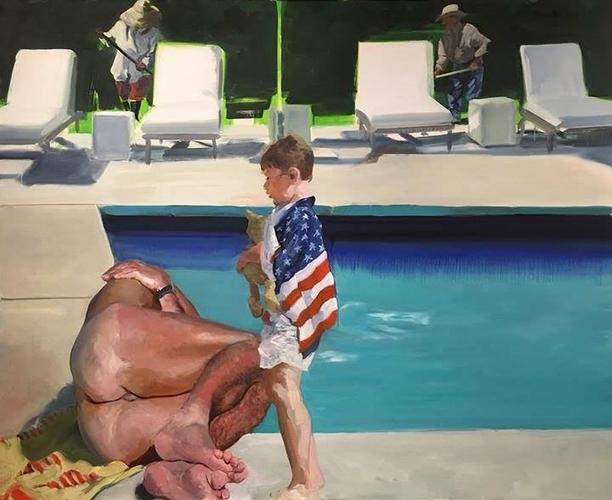
Eric Fischl’s Late America (2016) in “Late America” at Skarstedt Gallery, New York. Courtesy of the artist and Skarstedt Gallery.
Eric Fischl’s Late America, on display in May at Skarstedt Gallery in New York. Late America is a masterful work that captures the ethos of its title. The naked and pitiful adult male figure, tucked in the fetal position, is an elegant representation of the decline of American rights and and freedoms in these nonsensical times.
This is the second in a two-part series. Read the first one here.